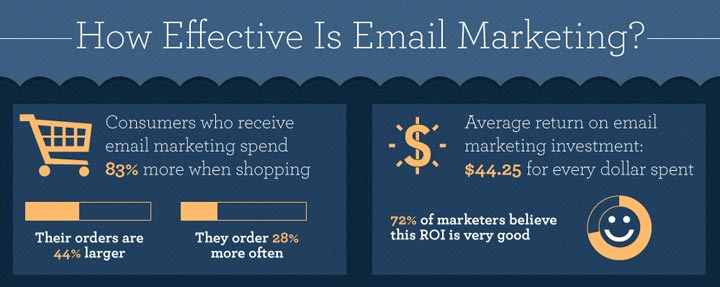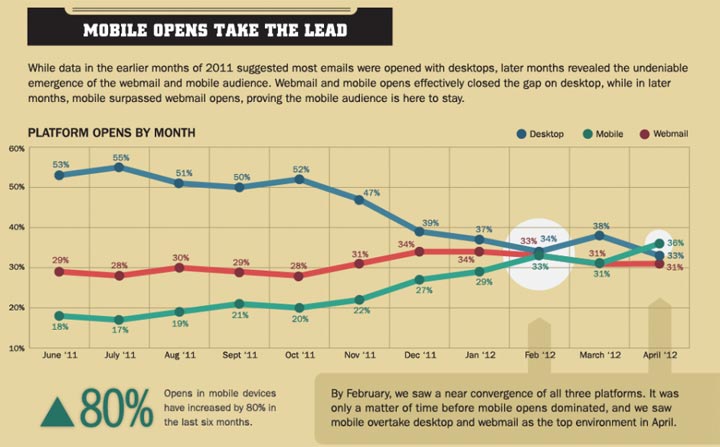Q&A: How Can I Use All the Search Keywords for an Amazon Listing?
This is the second of a series of articles where I’m answering several questions that have come in via email in the past few days, that I feel that you’d gain value from hearing the answer too.
Maximising the Search Keywords on Amazon
Today’s question is in relation to using the extra keywords when creating or updating products on Amazon.
If you didn’t know about these, then dig in they can be leveraged to help drive extra traffic to your Amazon product listings and as we find out they complement the product title.
Here’s the question:
Hi Matt,
Amazon have 5 extra cells in excel that we can enter keywords into and they allow 50 characters per cell.
How do I use all these all to maximum benefit and can I put in more than one keyword into the cell, if so how?
Regards,
Loïc.
So What Are Amazon Search Keywords?
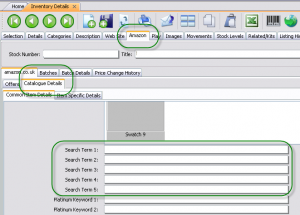 So before dig in we need to make sure that we’re all on the same sheet, literally the same import sheet.
So before dig in we need to make sure that we’re all on the same sheet, literally the same import sheet.
When creating or updating products on Amazon you can do this using an import sheet that Amazon provides. These import sheets vary from category to category and if you are using a 3rd party tool, then look for 5 boxes called “keywords” or “search terms”.
I’ve included a screen shot from an eSellerPro account to the right and these are found on the “Catalogue Details” tab and also they should not be confused with “Platinum Keywords” (Platinum Keywords are used for the Amazon Webstore and their categorisation)
There are a collection of inventory loading templates, the templates you need to use to create new products on Amazon with can be found here and they are at the bottom of the page (not the first ones).
In these workbooks, if you go to the sheet called “Apparel Template” (or similar) and scroll across to the right until you get to columns BW to CA (or about there, depends on the template being used). Here we’ll see “search-terms1” through to “search-terms5”, just like below:
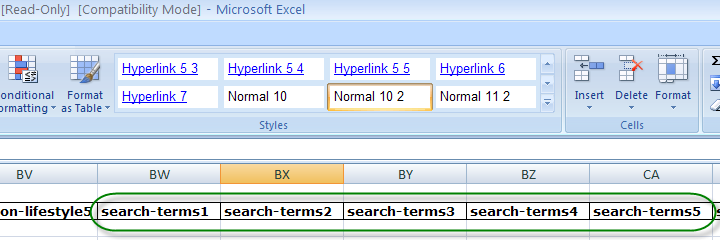
Why Are These So Important?
It’s these keywords that can help your products be found on Amazon, but they shouldn’t be filled with any old junk. Unlike eBay that has quite a complex search engine (which is going to get very smart next year with Cassini, whole different topic) the Amazon sites search engine is still very primitive in comparison.
And it’s because of this, these keywords can make all the difference in making your items found, especially when we consider that the search bar at the top of the Amazon site, takes up a minimum of 44% of the width header area, even the Amazon logo or cart doesn’t get that kind of treatment!

With a search box area that size, we have to be assuming that at least 95% of all sales or more on Amazon are driven by the search this box alone. I think I’ve made the point, search keywords are really important.
What Does Amazon Have to Say About the Search Keywords?
Surprisingly not a lot! Quoting Amazon’s help file for sellers below (which is also worth a good read):
Use terms once
Because the words of the product name are already searchable, do not use search terms that are words also contained in the title. For example, the complete list of automatic search terms for Allison’s Cookies is allison, gourmet, organic, chocolate, chip, pecan, cookie, one & dozen. Good search terms for Allison’s Cookies, therefore, might be “natural,” “baked,” and “dessert.”
Use single wordsSingle words work better as search terms than phrases. If you use phrases, then customers must type each entry exactly as you entered it. For example, if you enter “natural baked dessert” as search terms for Allison’s Cookies, then that is what customers must type. If they type “natural” or “dessert,” your products won’t appear in the search results. However, by listing these terms separately, you allow for more combinations, such as natural, natural dessert, baked desserts, baked, dessert, and baked natural. If you aren’t getting the sales you expect, continue to experiment with your search terms until you find you have the best combination of product title and search terms for your products.
To summarise what Amazon is suggesting we do is to try and keep to broad words and not to repeat them.
That’s pretty straight forwards and good advice. But sometimes broad is not good enough and we need to be specific and this is where the next question/answer comes in.
How Do You use All the Space Provided in the Search Terms?
In each of the search terms fields, 1-5 you’re allowed to enter up to 50 characters and the trick to leveraging these is to use commas between each keyword. That’s 250 characters of search-for-me-find-me goodness.
That way instead of just entering one keyword into each of the 5 search term cell’s, you can now enter multiple keywords in each and because you can use more than just one or two words you can use phrases too.
Now before you go keyword spam-tasticly-crazy with these, it’s really important to take note of Amazon’s first suggestion, use keywords once or kinda taking notice anyway.
Sticking in “ipod,ipod,ipod,ipod,ipod,ipod,ipod,ipod,ipod,ipod” is going to be futile, however stringing keywords together to make mini phrases, well that’s targeted.
Staying with the iPod theme for a few moments and picking on the #1 selling iPod charger, if we look at the title “FreeLogix – White UK 3 Pin Mains Charger – iPod All Generations” and the keywords that are being used:
- ipod charger,
- ipod mains charger,
- ipod nano charger,
- ipod charger,
- ipod 3pin uk charger,
- Portable Audio,
- Portable Audio
While the last two are duplicates, the rest are phrases. In fact the last two are absolutely pointless, who the hell searches for “Portable Audio”?
With thanks to Wikipedia the versions of the iPod are as follows:
- Classic
- Mini
- Nano
- Shuffle
- Touch
I’ve got a Shuffle (fab little thing, doesn’t play Podcasts though…) and the socket won’t fit the shuffle, I’m not sure the others, but for the sake of example we’ll assume they’re all the same.
To make this #1 performing SKU even better, we would bulk these keywords out to include:
- ipod classic charger
- ipod mini charger
- ipod touch charger
Plus seeing as we have 250 characters to use up, we’d also be wanting to play with some other keywords too. Such as:
- ipod uk charger
- ipod 3 pin mains charger
- ipod 3 pin uk charger
- ipod wall charger
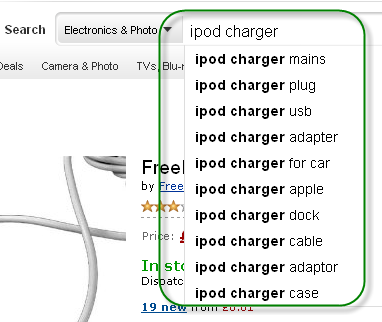 And then if you get bored or stuck with a keyword, we have the best tool available… It’s call predictive search.
And then if you get bored or stuck with a keyword, we have the best tool available… It’s call predictive search.
Nipping over to Amazon and typing in “iPod Charger” and then pressing space, we are then given predictive keywords that users will search for
See where I’m going with this?
Yep, you’re right, it’s keyword data!
In this example, most of the keywords are not really useful, however these are:
- ipod charger plug
- ipod charger mains
Very quickly, we can get to our ideal limit of using all 250 characters in the search term boxes. And while yes there will be duplicates, they’re going to match what Amazon are presenting to buyers via that whopping great big search box.
So our final keywords to enter into the search terms fields 1-5 will look something like this:
Search Term 1
ipod charger,ipod classic charger,ipod mini charger
Search Term 2
ipod mains charger,ipod touch charger
Search Term 3
ipod nano charger,ipod uk charger
Search Term 4
ipod charger mains,ipod wall charger
Search Term 5
ipod 3pin uk charger,ipod 3 pin uk charger
Obviously you’d spend a little more time than what I have to do further research, but you get the idea, we can use the same keywords that are used in the title, but supplement them with phrases, not keywords in the search term boxes.
In Summary
We’re given 5 search term fields for enhancing the listing search visibility instead of stuffing these with mindless keywords or just single keywords, use phrases. Use what Amazon suggests in their own search box and copy those to your keywords.
We can use comma’s in search terms to enter more than just one term per search field and that means we can bulk these out to cover the common phrases that allow our items to be found. We’re given 250 extra characters, let’s make sure we use them all :)
Have you used this before and found that it works for you too, or didn’t know that you could use a comma and add even more keywords to the search terms fields? Let me know in the comments box below.

 Time, we never have enough of it and as business owners, we always wish we had more, I know I do!
Time, we never have enough of it and as business owners, we always wish we had more, I know I do!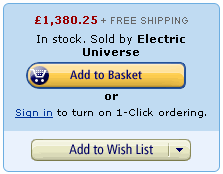 Today’s question is in relation to scoring the Amazon Buy Box for the first time in a new Amazon account.
Today’s question is in relation to scoring the Amazon Buy Box for the first time in a new Amazon account. Amazon to the best of my knowledge sand-boxed new selling accounts. This is where they trickle you sales over a long period of time to see how the business reacts to increasing sales. It’s a good system, that works and this also highlights that Amazon is focused on looking after number 1 in the equation.
Amazon to the best of my knowledge sand-boxed new selling accounts. This is where they trickle you sales over a long period of time to see how the business reacts to increasing sales. It’s a good system, that works and this also highlights that Amazon is focused on looking after number 1 in the equation.





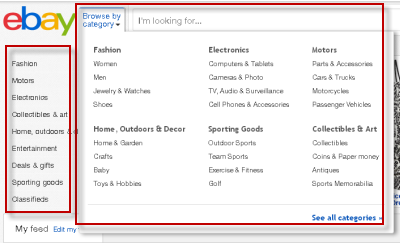 In the Podcast Chris felt it really important to stress that there are no changes to the way in which the search results are being delivered for searches. We know that eBay’s new search is coming, but for now it looks like they’re giving us these updates in bite-sized chunks.
In the Podcast Chris felt it really important to stress that there are no changes to the way in which the search results are being delivered for searches. We know that eBay’s new search is coming, but for now it looks like they’re giving us these updates in bite-sized chunks.

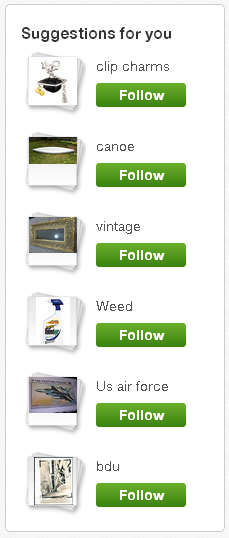 You can test drive this by going to
You can test drive this by going to  We do dabble in the future in the Podcast, suggesting that if eBay take their newly acquired
We do dabble in the future in the Podcast, suggesting that if eBay take their newly acquired 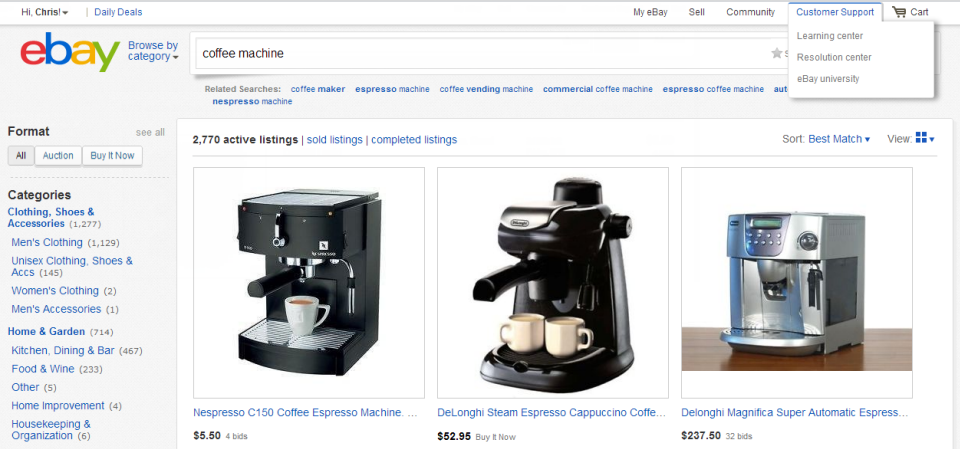
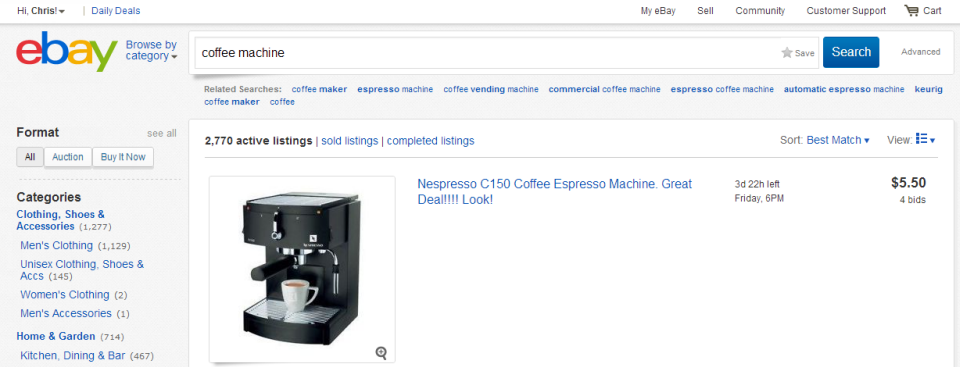
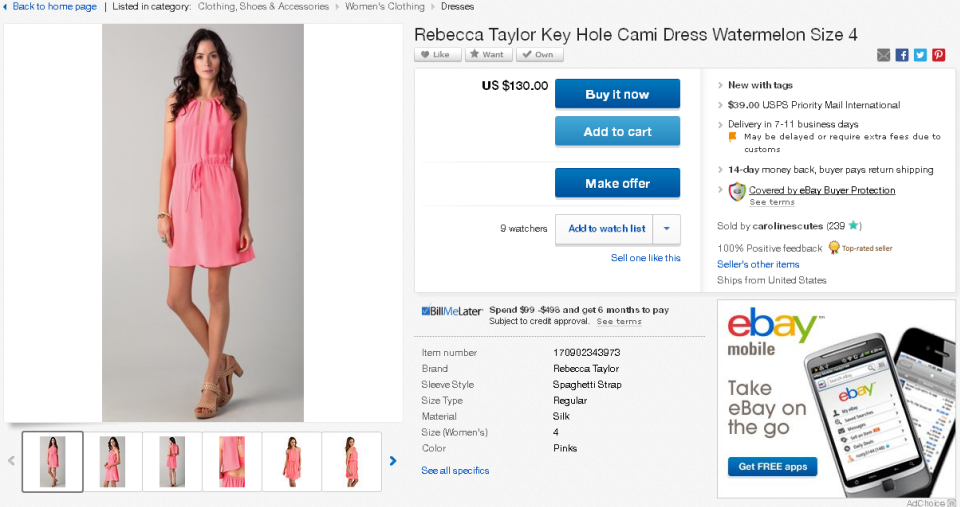
 We’ve now got a more compact listing layout, but with the information the customers needs to make an informed decision if this item is the right item for them.
We’ve now got a more compact listing layout, but with the information the customers needs to make an informed decision if this item is the right item for them.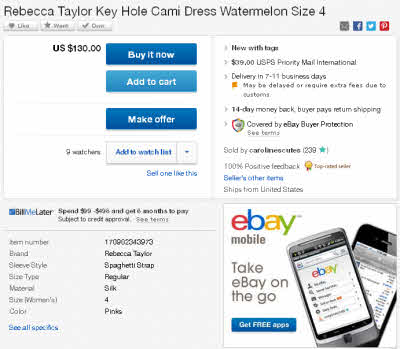 When it comes to the right-hand-side panel of the listing page, we’ve also have some major changes here too.
When it comes to the right-hand-side panel of the listing page, we’ve also have some major changes here too.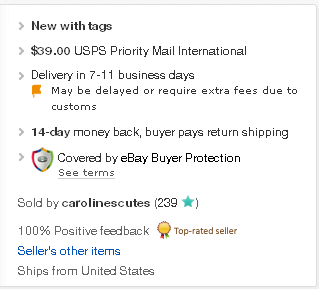 The big change is in the top right quarter, the items key details. The condition now links to the description area, we’ve got the first delivery cost and also an ETA on when the item will be with us, along with a summary of the returns policy and the buyer protection notice.
The big change is in the top right quarter, the items key details. The condition now links to the description area, we’ve got the first delivery cost and also an ETA on when the item will be with us, along with a summary of the returns policy and the buyer protection notice.
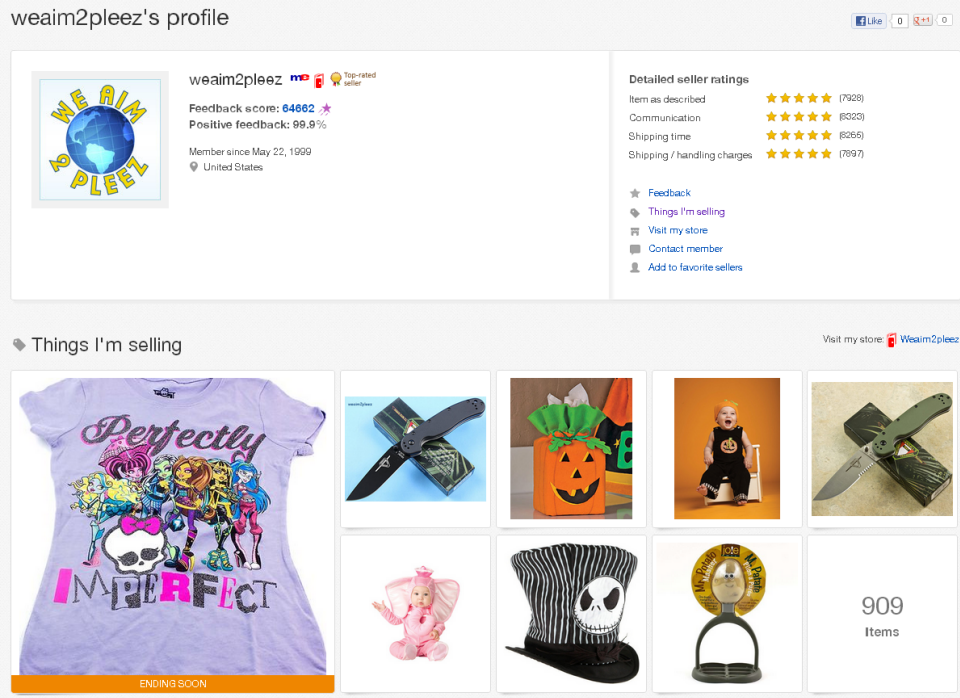

 I spoke with
I spoke with  Forrester, probably the world’s most credible research agency, conducted a study in 2011 called “
Forrester, probably the world’s most credible research agency, conducted a study in 2011 called “ John mentions in the Podcast a “mix” and this is simply referring to a “Marketing Mix” and he’s hit the nail on the head, with this study we’re able to say that Social Marketing isn’t carrying the weight that some would like you to think it does.
John mentions in the Podcast a “mix” and this is simply referring to a “Marketing Mix” and he’s hit the nail on the head, with this study we’re able to say that Social Marketing isn’t carrying the weight that some would like you to think it does.